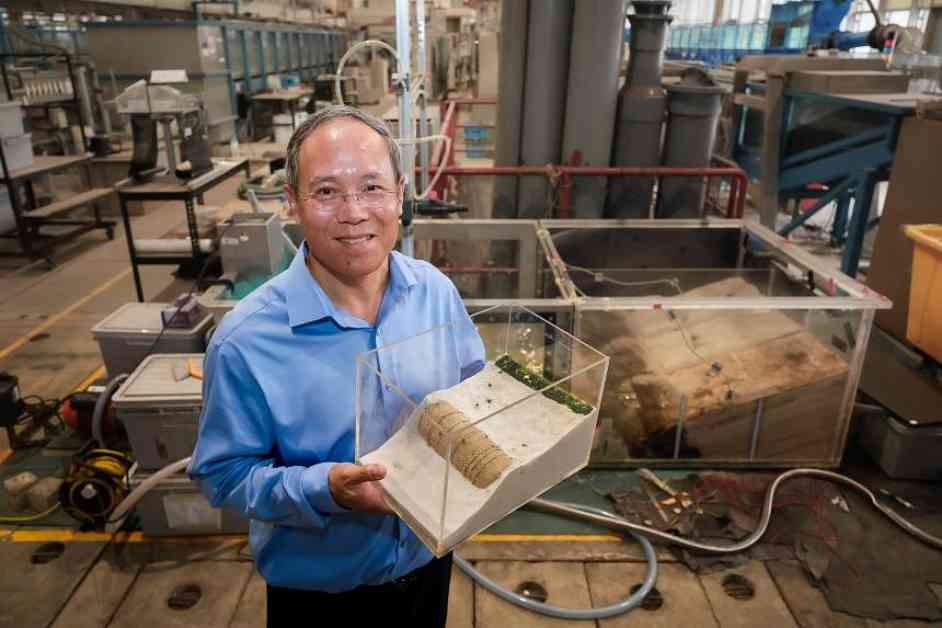Singapore is taking a unique approach to coastal protection by using natural materials like plant fibers, sand, and soya bean powder to create “sea walls” to combat rising sea levels. This innovative project proposed by Nanyang Technological University’s Professor Chu Jian aims to protect fragile ecosystems while also promoting the growth of coastal trees and mangroves. The project has received funding from the Government as part of the Coastal Protection and Flood Resilience Institute.
The use of nature-based beams along the shoreline is a more eco-friendly alternative to traditional concrete barriers that can harm coastal habitats and nesting creatures like turtles. The beams are designed to accumulate soil and sand over time, raising the beaches and creating a natural barrier against strong waves. This unique approach combines engineering solutions with nature’s resilience to protect Singapore’s coasts.
In addition to the project led by Professor Chu, other research initiatives under the Coastal Protection and Flood Resilience Institute are focused on harnessing nature to defend the coast and building scientific knowledge to predict floods. With Singapore’s mean sea level expected to rise significantly by 2100, innovative solutions like these are crucial to protect the country’s coastal areas from extreme weather events.
One of the new projects under the Institute involves developing floating breakwaters that can generate green energy while absorbing the power of extreme waves and surges. These breakwaters could be used to power offshore aquaculture farms and provide protection against harsh sea conditions. This sustainable approach to coastal protection highlights Singapore’s commitment to developing eco-friendly solutions to combat climate change.
The efforts to enhance coastal protection measures also involve collaboration between engineering firms, environmental consultants, and nature groups. Building capabilities in coastal adaptation and developing talent in this field are essential for ensuring the success of future projects. The launch of a new chapter on coastal protection by the Singapore Water Association reflects the growing importance of sustainable solutions in safeguarding coastal areas.
As Singapore continues to invest in research and innovation to address the challenges posed by rising sea levels, projects like the one proposed by Professor Chu Jian demonstrate the potential of nature-based solutions in enhancing coastal resilience. By combining engineering expertise with ecological principles, these initiatives offer a sustainable way forward in protecting Singapore’s coasts for future generations.









